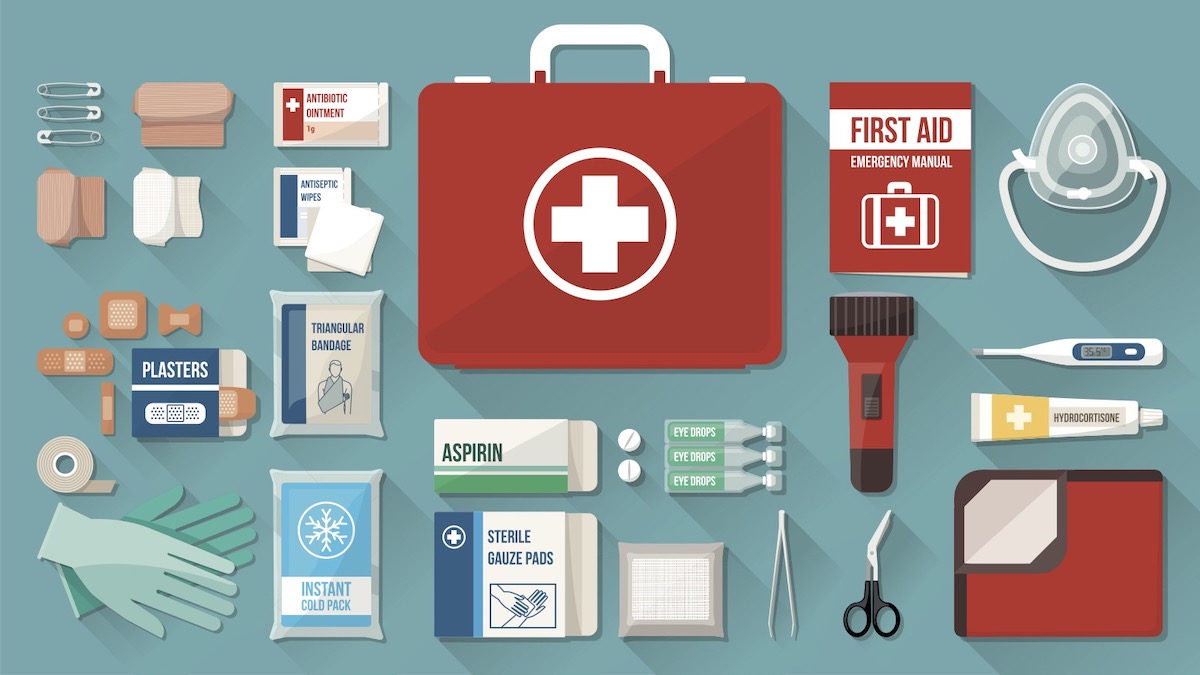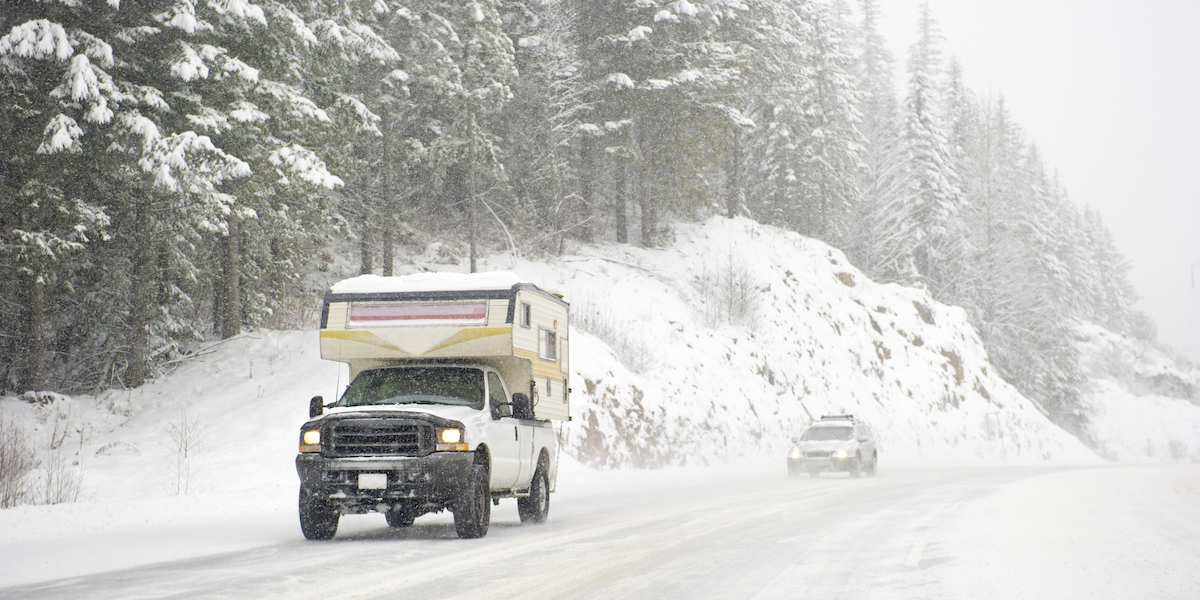RV System Fundamentals
Learn to use your RV systems efficiently for a fun and safe trip
Image Caption:
RVs and How They Work
Contrary to popular anthropologic thought, Neanderthal Man just barely predated Tent-Camping Man on the evolutionary timeline. It was only after sufficient pain and suffering forced the genes to the other side of the pool that RV Man appeared, and life on earth has been better ever since then.
But with every leap in the progress of man, there comes a period of adjustment, a necessary interval of learning and refinement. And so it is with that segment of civilization in which RVs reign.
One of the giant steps forward that was made with the appearance of RVs has to do with the onboard systems — those mechanisms that bridge the gap between primitive camping and life at home. Plumbing and electricity and gas appliances all contribute to the comfort and convenience of the user, but they also require some instruction so the operator knows the how and why of operating procedures.
Water System
Technically, the plumbing is divided into two subsystems: freshwater and wastewater.
Freshwater
The freshwater system provides two means for supplying the RV occupants with usable water. One is an on-board freshwater storage tank that allows the RV to carry a ready water supply anywhere it goes. The tank is filled through an inlet on the side of the RV or through the city-water connection controlled by valves. It incorporates an electric demand-type pump that switches on and off as often as necessary to keep the system pressurized as faucets are opened or the toilet is flushed.
The alternate freshwater supply comes from a city-water hookup that delivers pressurized water via a hose that is connected to an inlet on the side of the RV. When camped at a campground with city-water hookups, simply attach the hose to the inlet, turn on the water, turn off the water pump because it is not needed, and use the plumbing just as you would at home. To protect the RV plumbing system against pressure that is too high, many RVs have a pressure regulator built into the city-water inlet, but if this is not the case, a regulator (available at RV supply outlets) should be installed between the hose and the campground faucet.
A new RV, or one that has been out of action for a while, will have air in the plumbing lines. Purge the air by opening all the faucets in the RV one at a time, both hot and cold, until water flows without sputtering.
Wastewater
The wastewater system is divided into two sectors: gray water and black water. Gray water originates from sinks or the tub/shower. Blackwater is what is flushed down the toilet. Separate holding tanks store these two types of wastewater until they are ready to be drained at a dump station. Depending upon the type and size of RV, and the number of people using the systems, holding tank capacity will accommodate a certain number of camping days before needing to be dumped. Monitor panels indicate how full the wastewater tanks are, as well as how much water is left in the freshwater tank, allowing the RVer to plan ahead for visiting a dump station and refilling the freshwater tank. These monitor gauges are notoriously inaccurate and should be used for approximation only.
Dumping Your Tanks
The dumping process is not as difficult as it may seem. Having the right equipment (proper length of dump hose and connections) will make the task easier. Both holding tanks empty through a single outlet located somewhere on the underside of the RV, but each tank is controlled by an individual valve. Connect the dump hose at the RV outlet and at the dump-site inlet. Always empty the black-water tank (generally the larger of the two valves) before dumping the gray-water tank, because in this way the gray water helps flush the dump hose with relatively cleaner water.
Some people make the mistake of leaving their dump valves open all the time when they’re in a camp that offers sewer hookups at each site. The problem is that this doesn’t allow any fluid to be stored in the holding tanks, and a good supply of fluid is necessary to adequately flush the black-water tank. Ideally, the black-water tank should not be dumped until it is about three-quarters full. Leave the valves closed until the tanks need to be dumped, then open the black-water valve first. Close the valve, route a hose (not the hose used to fill the freshwater tank) into the bathroom and run water into the toilet to fill the black-water tank about halfway, then open the valve once again to flush the holding tank. Close the valve after dumping, add the appropriate amount of tank chemical and flush the toilet a few times to add enough water to activate and circulate the chemical. With all that done, dump the gray-water tank. The gray-water system doesn’t require additional flushing, because it contains only the drain water from sinks and the shower/tub. Finish by closing the gray-water tank’s valve and washing the dump hose with clear water, then stowing it in its holder, replacing the cap on the RV outlet and cleaning up the dump area.
Electrical System
RV electrical systems include both 12-volt DC and 120-volt AC, permitting the use of both RV and household electrical appliances.
DC Power
The 12-volt DC system utilizes storage batteries that, as long as they are charged, can supply a constant source of power to operate lights, fans, a water pump, a furnace fan, a sound system, a small television and VCR, etc. Other 12-volt DC specialty appliances are also available at RV or marine supply stores. House batteries are separate from the vehicle’s starting battery, to prevent the problem of discharging the starting battery by overuse of the coach electrical accessories, leading to an inability to start the vehicle engine. A battery isolator is employed to accomplish this separation of house and starting batteries, but while traveling, the isolator allows the vehicle’s alternator to recharge the house batteries as well as the starting battery.
AC Power
The 120-volt AC system is capable of operating household-type appliances such as an air-conditioner, a microwave oven, a refrigerator, an electric frying pan, a griddle, a toaster, a waffle maker, a blender, a vacuum cleaner, a computer, a hair drier, power tools, a battery charger, etc. The interrelationship between 12-volt DC and 120-volt AC is interesting. When the 120-volt AC system is active, it utilizes a converter to allow continued use of all the 12-volt DC accessories and it also recharges the house batteries. In exchange, the 12-volt DC system can be tapped by an inverter (if the RV is so equipped) to make a limited amount of 120-volt AC power with which to operate some appliances for a short period of time.
To activate the 120-volt AC system (other than through use of an inverter), the RV is plugged into a campground power source, typically referred to as shore power. A heavy power cord, rated for 30 amps, is best to properly supply electricity to operate all the on-board accessories. A light-gauge cord of inadequate amp rating is not suitable for such things as air-conditioner startup, which imposes a heavy electrical load. If the roof air conditioner or other heavy appliances are not going to be operated, a 12-gauge cord may be used, but it should not exceed 25 feet in length. If an extension cord is used in conjunction with the RV’s original power cord, the extension should be of the same gauge, so as not to diminish the electrical rating. When a 30-amp supply is not available, adapters may be plugged into the 30-amp power cord to allow it to be connected to 15-amp or 20-amp outlets. However, this arrangement may reduce the ability to operate more than one appliance at a time.
Problems may occur with the 120-volt AC system if there is a low-voltage condition within the campground shore-power system. A digital multimeter, set to read AC power, will indicate available voltage. The roof air conditioner should not be operated if available voltage is 110 volts or lower, because damage may occur to the air-conditioner unit.
When no shore power (or inadequate shore power) is available, an auxiliary generator can be operated to make 120-volt AC electricity. Many RVs have built-in auxiliary generators that are wired directly to the coach’s 120-volt AC wiring harness, allowing the owner to operate appliances via residential-style wall outlets. If a built-in generator is not available, it may be possible to carry a small portable unit to supply AC power. The connection between the generator and the RV is made by plugging the shore-power cord into the generator outlet.
LP-Gas System
LP-gas (also known as LPG or propane) is used to operate the RV’s refrigerator, range, oven, water heater and furnace. These are important accessories, so the propane system is vital to the full enjoyment of an RV. A hot shower, a warm meal, a cold drink and a toasty furnace make all the difference, elevating this form of camping well above the cave dwelling of eons past.
LP Tanks
The LP-gas system involves the use of storage tanks or cylinders, regulators, valves, supply lines and appliances. Liquid propane is converted to a combustible gas as it is released from the pressurized tank. The regulator controls gas pressure as it is delivered from the tank through the supply lines to the accessories. RV owners do not need to concern themselves very much with the LP-gas system, except to ensure that the tanks are filled properly by qualified technicians-and if something doesn’t seem to be working as it should, to take the RV to a qualified LP-gas system repair facility to have it checked out. Other than keeping everything clean and undamaged, no other maintenance or repair work should be attempted by the RV owner, and no alterations should ever be made to the system.
When the tanks are filled, the RV owner should monitor the operation to make sure the tanks are never overfilled. During the filling operation, shut off all LP-gas-powered appliances. Tanks should never be filled above 80 percent capacity, to allow room for safe expansion as temperatures change.
When the LP-gas system is put into operation after being shut down for a while, there may be air in the supply lines, preventing pilots or burners from igniting right away. Keep trying to light the pilot or burner, allowing time for the air to be purged from the lines. Of course, you want to make sure the main tank valve is open and that there is an adequate supply of LP-gas in the tank, or the pilots or burners will never ignite.
Propane Safety
For safety’s sake, it is recommended that an RV not travel with LP-gas-powered appliance or burners lit. In the event of an accident or when refueling at a gas station, the open flame of a pilot or burner can act as a source of ignition for extremely dangerous escaped gasoline or LP-gas vapors, resulting in a tragic fire. Instead of traveling with LP-gas appliances in operation, use this checklist to be safe:
- Close the LP-gas tank valve.
- Switch the refrigerator over to 12-volt DC mode to maintain an adequate cold level for the food.
- Use the vehicle’s dash heater for interior warmth.
- Leave the water heater off until arrival at camp; the water will heat quickly after the unit is ignited.
If there is ever a rotten-egg odor in or around the coach, this indicates an LP-gas leak. The odorant is intentionally placed in the propane as a leak-warning mechanism. Extinguish all open flames, pilot lights and smoking materials, and leave the RV immediately. Don’t turn off light switches, close metal doors or do anything else that could create a spark. Leave the doors and windows open to allow ventilation. Shut off the main LP-gas tank valve to stop the flow of LP-gas. Don’t go back into the RV until it has ventilated thoroughly, and don’t use the LP-gas system again until the reason for the leak has been discovered and remedied.
In some ways, the economics of RVing can be impacted by the way in which the owner operates on a day-to-day basis. For example, when camping where full hookups are available, it is more economical to switch the refrigerator over from LP-gas to 120-volt AC operation. Cooking in the microwave is less expensive than burning LP-gas to use the range or gas oven.
The RV systems we’ve discussed are what make this lifestyle so rewarding. Learning to use them efficiently is not complicated and doesn’t take long, leaving the creative RVer more time to do things such as hiking to see the petroglyphs left by earlier campers who didn’t know just how convenient and comfortable life could be.
Tools for the Your RV Systems
With so many different systems in an RV, it’s important to have the right tools along, just in case you need to serve as handyman. Following is a list of things that should be in every RVer’s toolbox. In addition to what we have listed here, replacement parts for special items should also be included.
- Adjustable wrench
- Set of SAE and metric combination wrenches
- Set of SAE and metric deep sockets, extension, ratchet
- Screwdrivers: Phillips and flatblade in various sizes
- Water pump pliers
- Vise-grip pliers
- Needle-nose pliers
- Regular pliers
- Side cutters
- Wire stripper, crimper
- Hacksaw with spare blades
- Duct tape
- Black electrical tape
- Teflon tape
- Digital multimeter
- Electrical primary wire
- Assorted wire terminals
- Replacement bulbs for lights
- Assorted fuses
- Nylon ties
- Assorted screws, nuts, bolts, washers
- A length of lightweight nylon twine
- Exterior caulk
- Fan belt
- Radiator hoses
- Motor oil (a couple quarts)
- Radiator coolant
- Brake fluid
- Automatic-transmission fluid
- Jumper cables
- Tow strap
- Spare tire and wheel
- Jack
- Lug wrench
- Portable 12-volt DC air compressor





